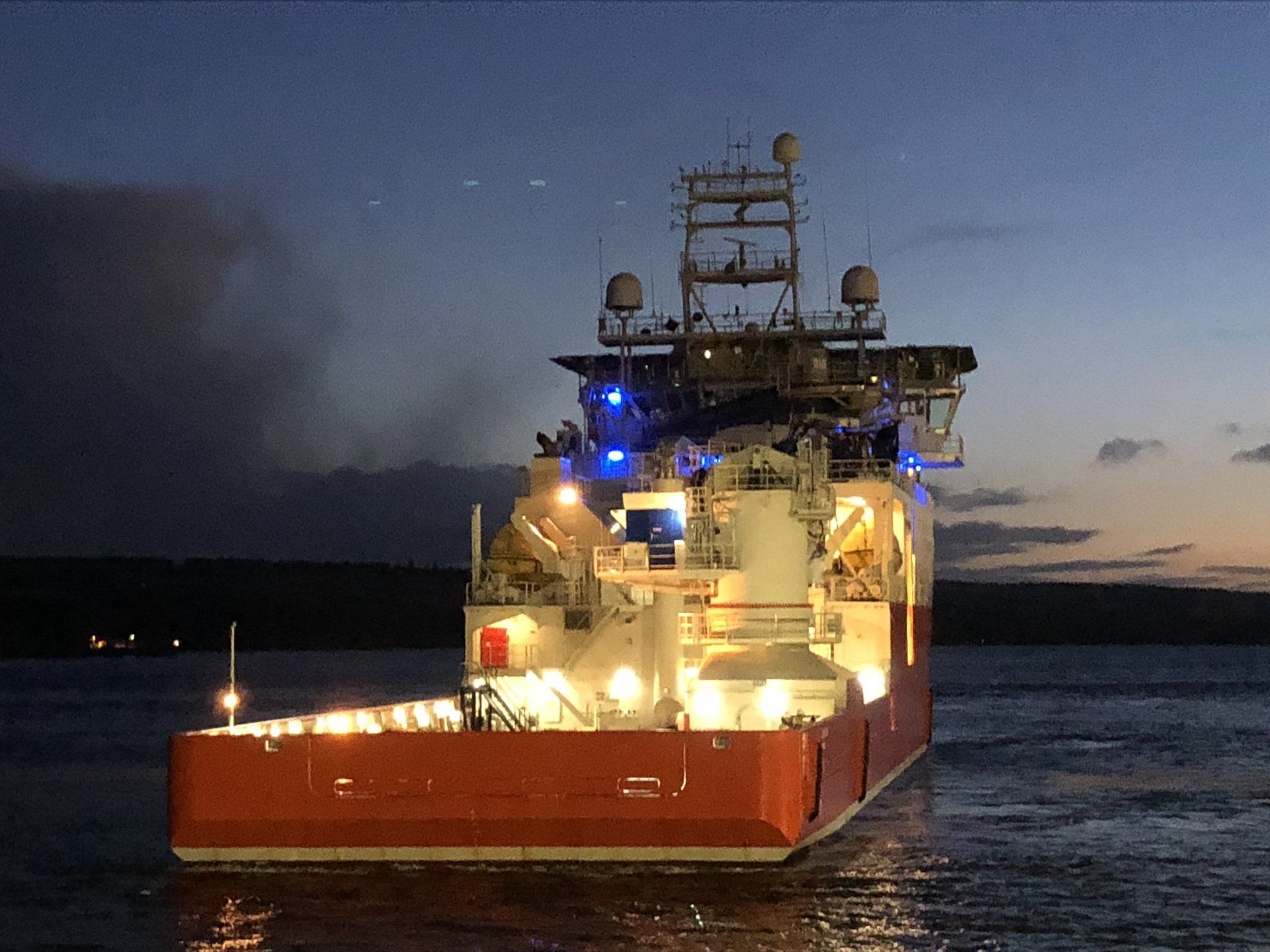Gold hunters’ OSV identifies $750m of lost cargo
Gary Dixon | Trade Winds – Offshore
Survey by Ostensjo ship pinpoints World War wrecks that will yield treasure.

A UK company’s offshore support vessel (OSV) will soon be heading out to sea to bring back the first batch of lost wartime gold and silver cargoes worth $750m.
Britannia’s Gold (BGL) used a chartered-in research ship, Ostenso Rederi’s 2,800-dwt Edda Fonn (built 2003), during April to survey seven known World War I and World War II wreck sites off Northern Ireland and the south and west of the Republic of Ireland.
During both world wars the British government shipped gold bullion to pay for munitions and goods. The estimated present day value of these shipments is about £300bn ($404bn). BGL’s research has identified more than 700 vessels that were specific gold and silver carriers.
Operational director Will Carrier told TradeWinds: “We are exceptionally busy with the continued analysis of the survey data and forward planning. We actually took a look at seven targets while out there and found two to be unworkable for various reasons. However this leaves us with five that we are making plans for right now.”
He added: “We are aiming to be out there in the very near future to commence recoveries. The total combined cargoes would be in the region of $750m.”
The OSV was hired for 22 firm days, with single day options. The survey was carried out to make sure the right vessels had been identified, and to assess the level of damage, environmental conditions and currents.
“The seabed out there is littered with them,” Carrier said. “That area was the gateway to the Americas; that’s where the Germans kept their U-boats. The cargoes were shipped out for safekeeping and as payment for supplies.”
Silver, zinc and tin found
BGL hopes to land the first cargo within 60 days of heading back out to sea. The company first looked at two targets within a mile of each other off the south coast of the Republic of Ireland. Both were sunk in the World War 1 era, the first a passenger liner and the second a cargo vessel. In 500 metres of water a large volume of tin was found, as well as zinc ingots.
“These commodity metals are in high demand on the metals markets and given the cargo volume of each wreck is considerable, BGL will return and recover these metals when we salvage the precious metal cargoes,” Carrier said.
The next wreck was “terribly broken”, appearing almost flattened, BGL said. Despite the wreck’s condition, BGL conducted a full survey but concluded salvage would be difficult and consequently we will delay an attempt on it,” it added.
A fourth vessel was sunk following heavy attack early on in World War 2. Having originally thought this a difficult target to salvage, the survey revealed that a simple ‘surgical extraction’ would be both straightforward and effective.
Charitable contribution
The last vessel was a sailing ship built in the 1890s.
“This was an easy and rewarding survey as we could see the vessel’s main cargoes resting in place as if they were only loaded onboard yesterday,” BGL said. “The targeted cargo will be out of sight and way below decks. However our survey identified the requirements for a successful recovery from this wreck. It was difficult to accurately quantify the size of the silver service collection. But from what can be identified it appears to be quite large and will probably have all other accompanying silver service items in the close vicinity. In addition, carrying such unique individual markings is expected to add to the value,” the company added.
The salvage work will involve cutting into the ships. The UK government is the owner of the bounty. BGL will store it and enter into negotiations to divide up the spoils. Some of its cut will be kept for future projects, some will be given to charity and some will be for shareholders.
One of the company’s directors is James Fisher CEO Nick Henry.
